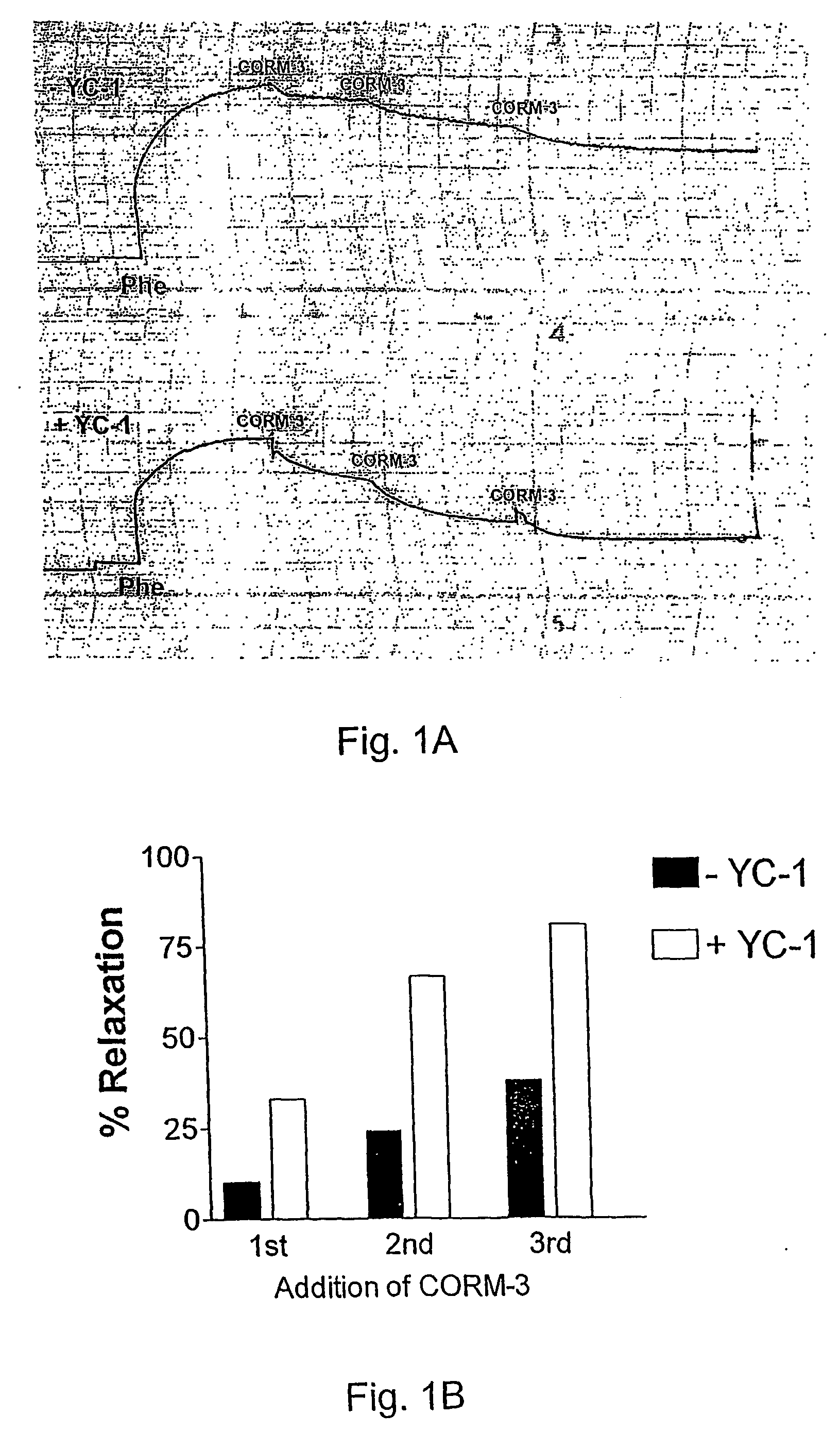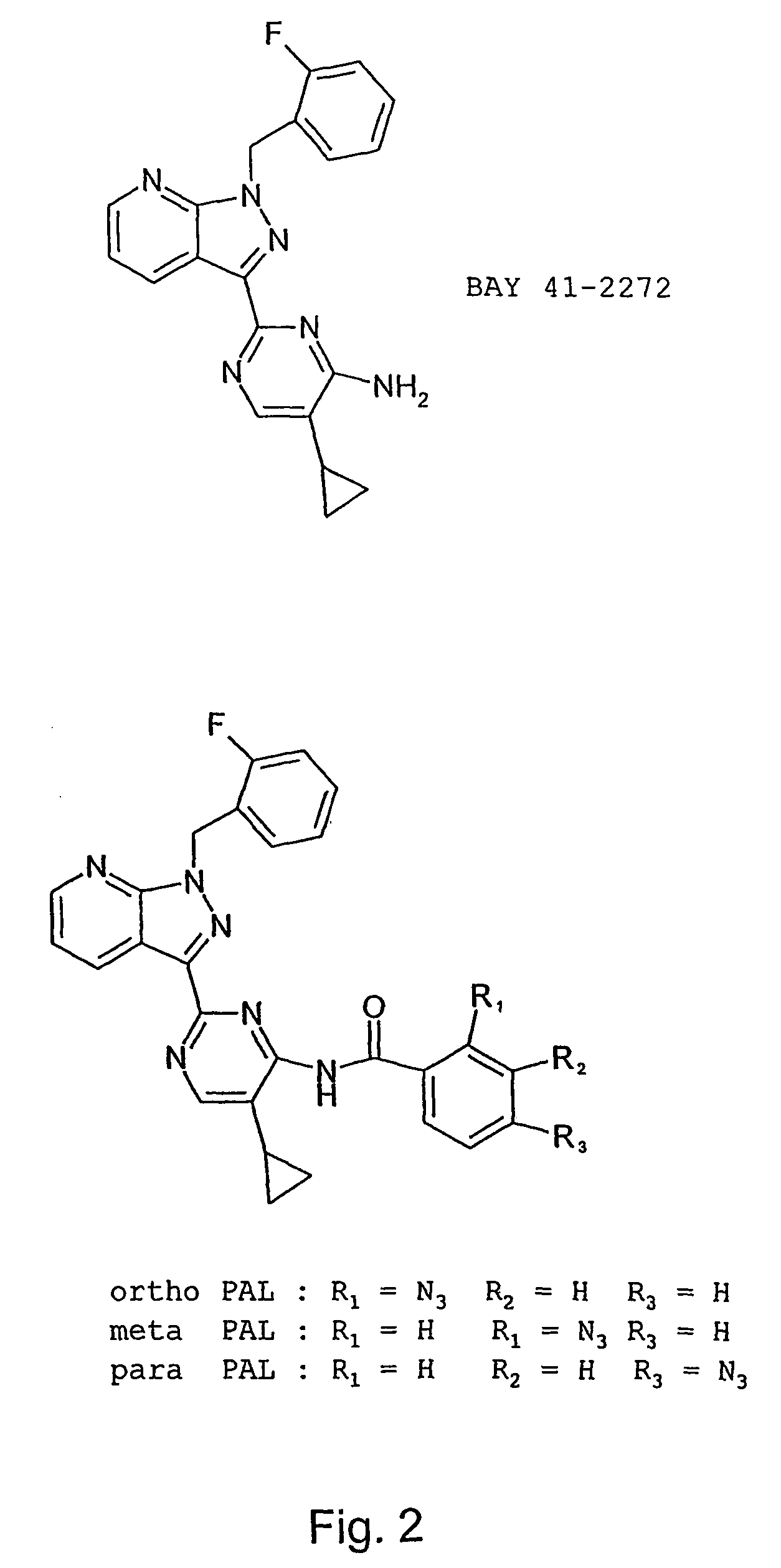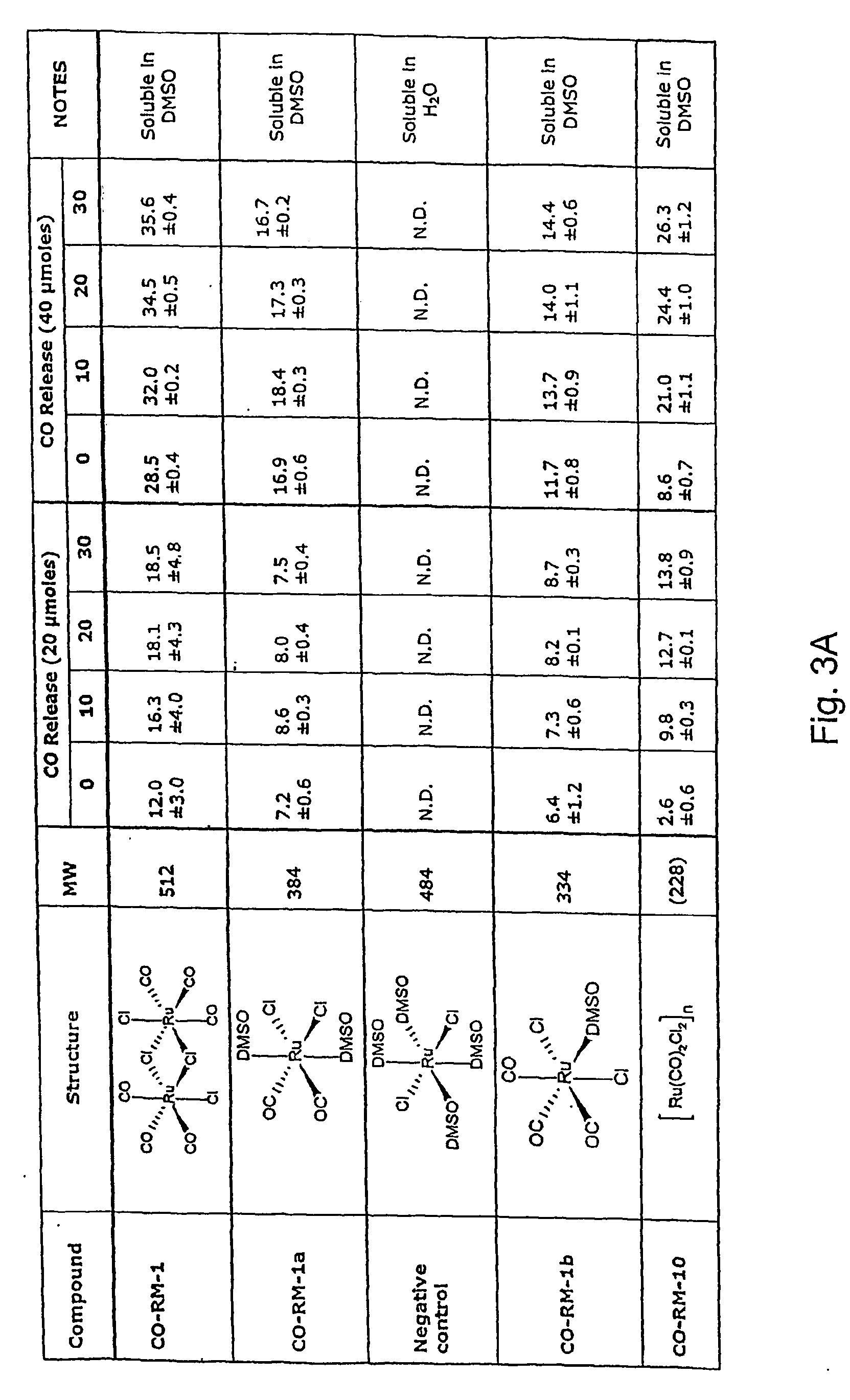Therapeutic delivery of carbon monoxide
a carbon monoxide and therapeutic technology, applied in the field of pharmaceutical preparations, can solve the problem that co is a poor stimulator of sgc in in vitro studies
- Summary
- Abstract
- Description
- Claims
- Application Information
AI Technical Summary
Benefits of technology
Problems solved by technology
Method used
Image
Examples
example 1
Preparation of isolated rat aortic rings and experimental protocol
[0106] The method for the preparation of isolated aortic rings has been previously described (5; 7). The thoracic aorta was isolated from Sprague-Dawley rats (350-450 g) and flushed with cold Krebs-Henseleit buffer (4° C., pH 7.4) containing (in mM): 118 NaCl, 4.7 KCl, 1.2 KH2PO4, 1.2 MgSO4.7H2O, 22 NaHCO3, 11 Glucose, 0.03 K+EDTA, 2.5 CaCl2 and supplemented with 10 AM indomethacin. Each aorta was trimmed of adventitial tissue and ring sections (˜3 mm length) were produced from the mid aortic segment. The rings were then mounted between two stainless steel hooks in 9-ml organ baths containing Krebs-Henseleit buffer which was maintained at 37° C. and continuously gassed with 95% O2-5% CO2. One hook was attached to a Grass FT03 isometric force transducer whilst the other was anchored to a sledge for regulation of the resting tension of the aortic ring. The rings were initially equilibrated for 30 min under a resting t...
example 2
Conversion of myoglobin (Mb) to carbon monoxide myoglobin (MbCO) by CO gas and CORM-3.
[0109] Myoglobin (Mb) in its reduced state displays a characteristic spectrum with a maximal absorption peak at 555 nm (see FIG. 4A, dotted line). When a solution of Mb (50 μM) is bubbled for 1 min with CO gas (1%), a rapid conversion to carbon monoxide myoglobin (MbCO) is observed. As shown in FIG. 4A (solid line), MbCO displays a characteristic spectrum with two maximal absorption peaks at 540 and 576 nm, respectively. This method has been previously developed to monitor and determine the amount of CO released from CO-RMs (7). Indeed, when CORM-3 ([Ru(CO)3Cl(glycinato)] is first solubilized in water and then added to the Mb solution, formation of MbCO is observed (FIG. 4B, solid line). The amount of MbCO formed is instantaneous and indicates that 1 mole of CO per mole of CORM-3 is promptly released (7). Interestingly, CO is rapidly lost when CORM-3 is left incubating overnight at 37° C. in phos...
example 3
Comparison between CORM-3 and iCORM-3 in their ability to elicit vasorelaxation.
[0110] CORM-3 (100 μM) added to isolated aortic rings pre-contracted with phenylephrine (Phe) promoted approximately 54% relaxation within few minutes from addition (See FIG. 5, solid line). In contrast, 100 μM iCORM-3 (which is incapable of releasing CO) did not cause any significant change in vessel tone (see FIG. 5, dotted line). These results indicate that CO liberated from CORM-3 is directly responsible for the observed pharmacological effect.
PUM
 Login to View More
Login to View More Abstract
Description
Claims
Application Information
 Login to View More
Login to View More - R&D
- Intellectual Property
- Life Sciences
- Materials
- Tech Scout
- Unparalleled Data Quality
- Higher Quality Content
- 60% Fewer Hallucinations
Browse by: Latest US Patents, China's latest patents, Technical Efficacy Thesaurus, Application Domain, Technology Topic, Popular Technical Reports.
© 2025 PatSnap. All rights reserved.Legal|Privacy policy|Modern Slavery Act Transparency Statement|Sitemap|About US| Contact US: help@patsnap.com



